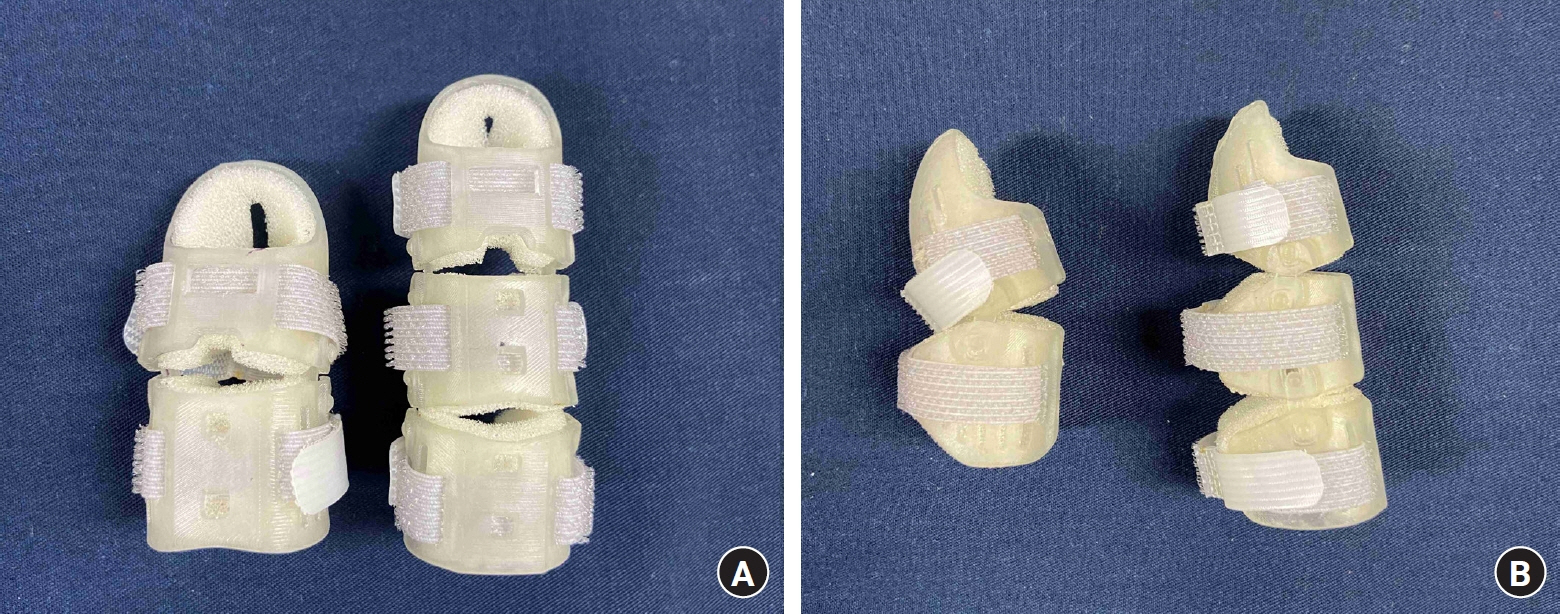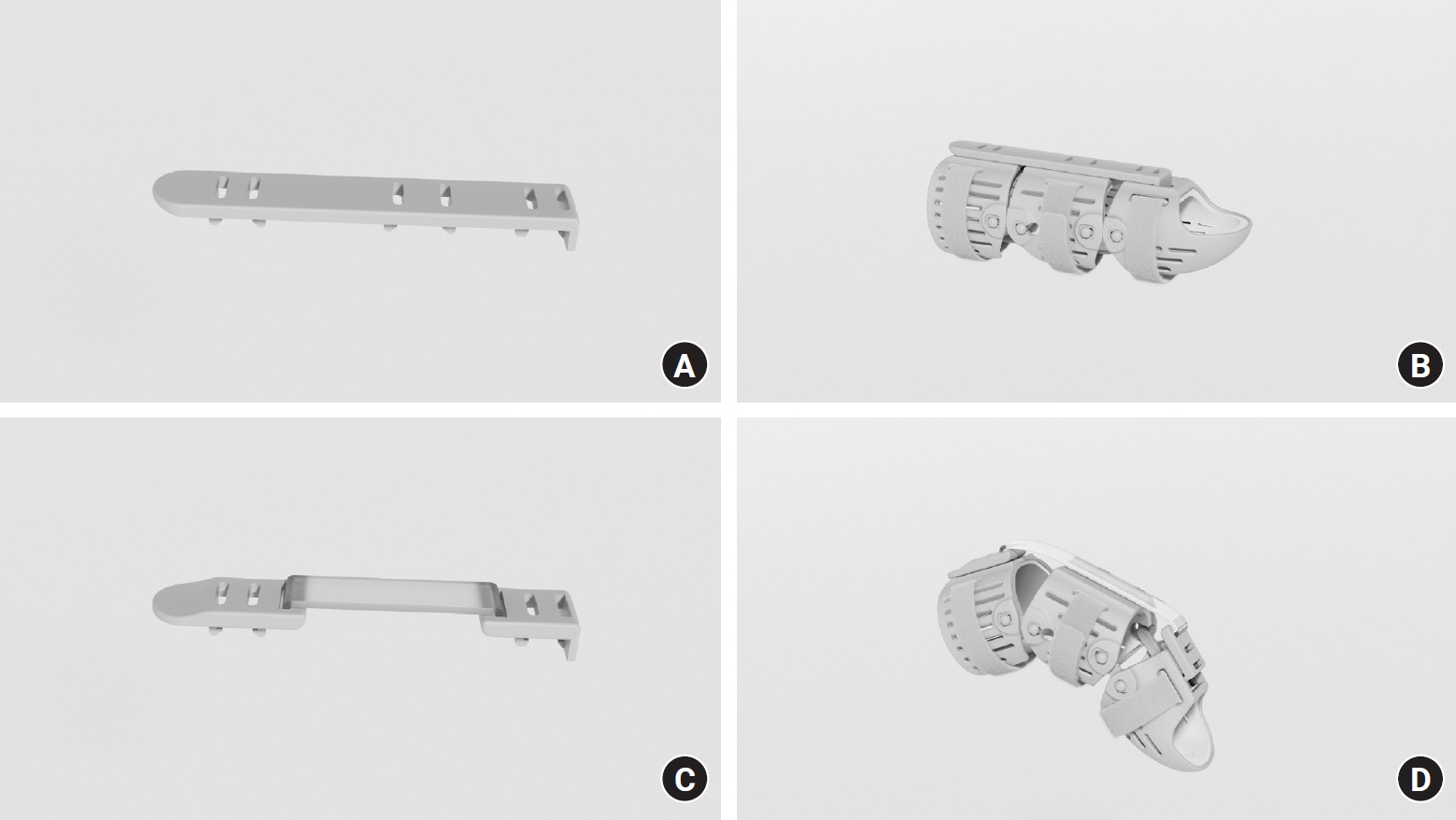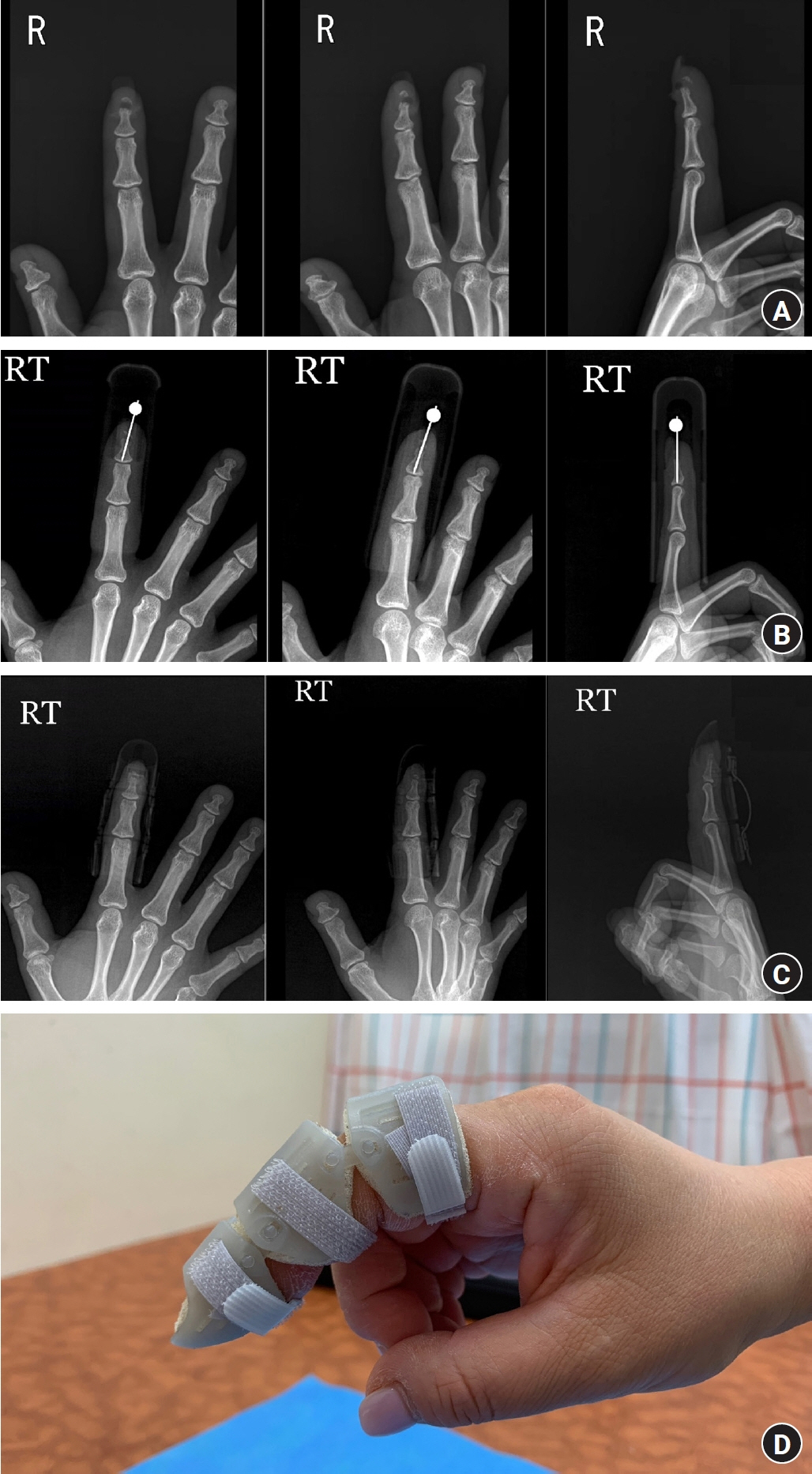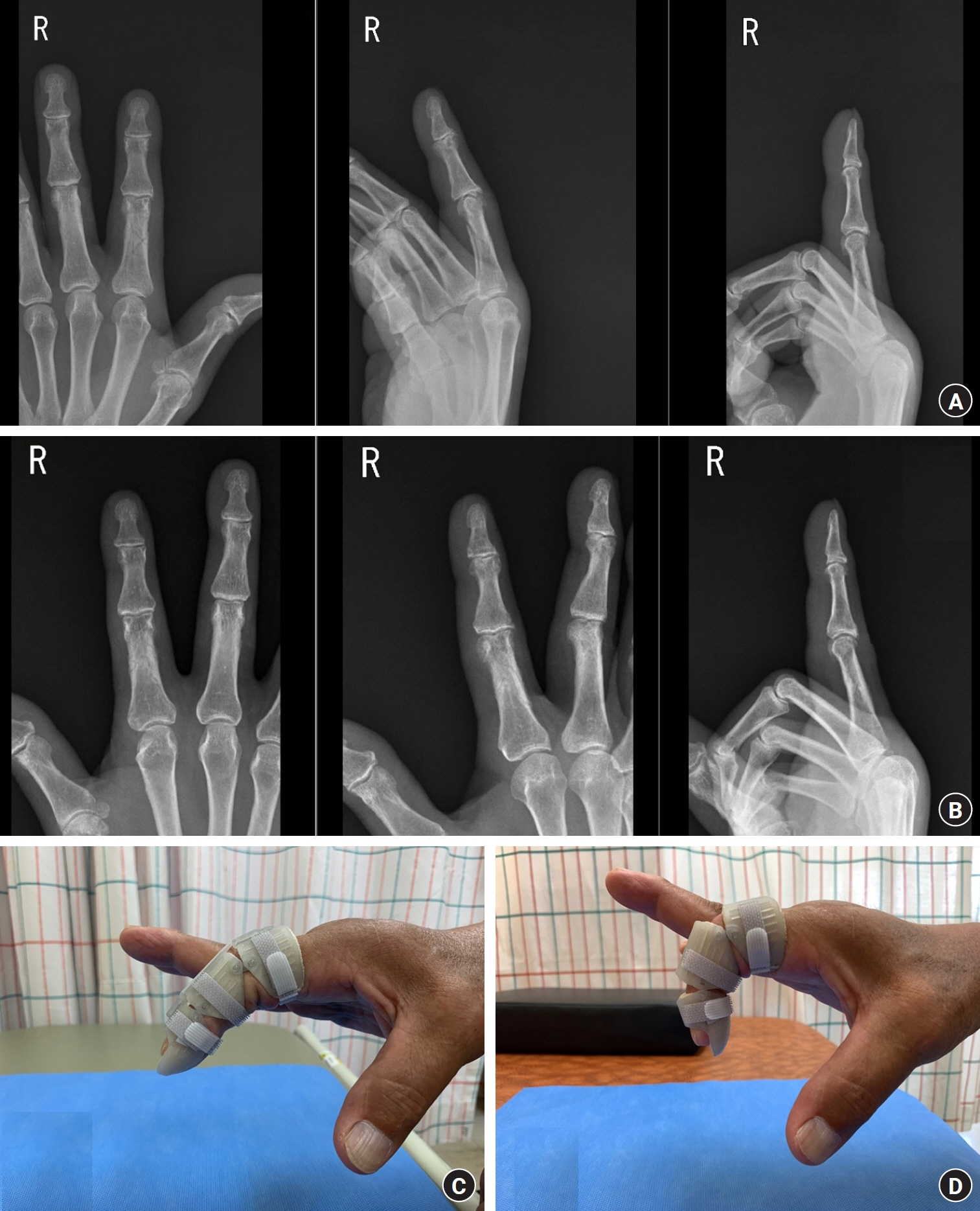Arch Hand Microsurg.
2023 Dec;28(4):239-249. 10.12790/ahm.23.0033.
A novel finger brace for preventing finger stiffness after trauma or surgery: a preliminary report with a case series
- Affiliations
-
- 1Department of Orthopedic Surgery, Soonchunhyang University Gumi Hospital, Soonchunhyang University College of Medicine, Gumi, Korea
- 2N2 Corporation, Gimhae, Korea
- KMID: 2548595
- DOI: http://doi.org/10.12790/ahm.23.0033
Abstract
- Purpose
Finger stiffness is a common complication following hand trauma or surgery. Early finger range-of-motion (ROM) exercises have proven to be the most effective method for preventing finger stiffness. In this paper, we introduce a novel finger brace designed for safe and early active exercises and present preliminary results from a small case series.
Methods
Our innovative brace is designed for direct insertion into the finger, ensuring enhanced comfort during use. This brace features hinges that facilitate unrestricted movement in the proximal and distal interphalangeal joints, with each phalangeal component having a rounded shape to prevent rotation. Furthermore, grooves are integrated at the top of the phalangeal components for inserting bars; a straight bar to immobilize and a silicone band to provide elastic resistance exercises within a limited range.
Results
Among 26 patients, 17 presented with fractures, five had extensor tendon injuries, and three had dislocations. For patients not requiring surgery, we applied the brace as early as possible. In cases involving surgery, the brace was applied step by step. When fixation was necessary for the first time, a straight bar was applied, and when starting finger movement, a silicone band was applied. The silicone band was then released to allow free finger movement. Except for one patient necessitating extensor tendon reconstruction due to a neglected rupture, all patients achieved full ROM without any complications.
Conclusion
Our novel ROM finger brace represents a safe and user-friendly option for effectively initiating finger ROM exercises.
Keyword
Figure
Reference
-
References
1. Chae S, Park IJ. Management of metacarpal and phalangeal fractures. Arch Hand Microsurg. 2023; 28:75–86.
Article2. Yang S, Kim JP. Hand fractures. J Korean Fract Soc. 2018; 31:61–70.
Article3. Meals C, Meals R. Hand fractures: a review of current treatment strategies. J Hand Surg Am. 2013; 38:1021–31.
Article4. Hardy MA. Principles of metacarpal and phalangeal fracture management: a review of rehabilitation concepts. J Orthop Sports Phys Ther. 2004; 34:781–99.
Article5. Onishi T, Omokawa S, Shimizu T, Fujitani R, Shigematsu K, Tanaka Y. Predictors of postoperative finger stiffness in unstable proximal phalangeal fractures. Plast Reconstr Surg Glob Open. 2015; 3:e431.
Article6. Pun WK, Chow SP, So YC, et al. A prospective study on 284 digital fractures of the hand. J Hand Surg Am. 1989; 14:474–81.
Article7. Page SM, Stern PJ. Complications and range of motion following plate fixation of metacarpal and phalangeal fractures. J Hand Surg Am. 1998; 23:827–32.
Article8. Crane E, Wimsey S. Posttraumatic hand stiffness [updated 2022 Dec 11]. StatPearls [Internet]. Treasure Island (FL): StatPearls Publishing;2023. Available from: https://www.ncbi.nlm.nih.gov/books/NBK565851/.9. Kaplan FT. The stiff finger. Hand Clin. 2010; 26:191–204.
Article10. Yang G, McGlinn EP, Chung KC. Management of the stiff finger: evidence and outcomes. Clin Plast Surg. 2014; 41:501–12.11. Nakayama J, Horiki M, Denno K, Ogawa K, Oka H, Domen K. Pneumatic-type dynamic traction and flexion splint for treating patients with extension contracture of the metacarpophalangeal joint. Prosthet Orthot Int. 2016; 40:142–6.
Article12. Ueba Y, Kurata H, Ono I. Basic biomechanics for orthotic therapy of the hand. Bull Jpn Soc Prosthet Orthot. 1999; 15:119–24.13. Nakayama J, Kurokawa K, Konishi A. A trial of a revolving-type dynamic traction splint for extension contracture of the metacarpophalangeal joint. Jpn Occup Ther Res. 2008; 27:168–73.14. Kee DH. Characteristics of hand dimensions and hand scale for Koreans. J Korean Inst Ind Eng. 2011; 37:55–63.
Article15. Jun D, Jeong M, Shin D, Choi H, Kim J, Lee M. Treatment of phalangeal joint stiffness related to proximal phalangeal bone fractures: therapeutic effects on the range of motion and finger pain. Arch Hand Microsurg. 2021; 26:254–64.
Article16. Freeland AE. Closed reduction of hand fractures. Clin Plast Surg. 2005; 32:549–61.
Article17. Fess EE, Gettle KS, Strickland J, Barber LM. Hand splinting: principles and methods. Plast Reconstr Surg. 1982; 69:373.18. Weeks PM, Wray RC Jr, Kuxhaus M. The results of non-operative management of stiff joints in the hand. Plast Reconstr Surg. 1978; 61:58–63.
Article










